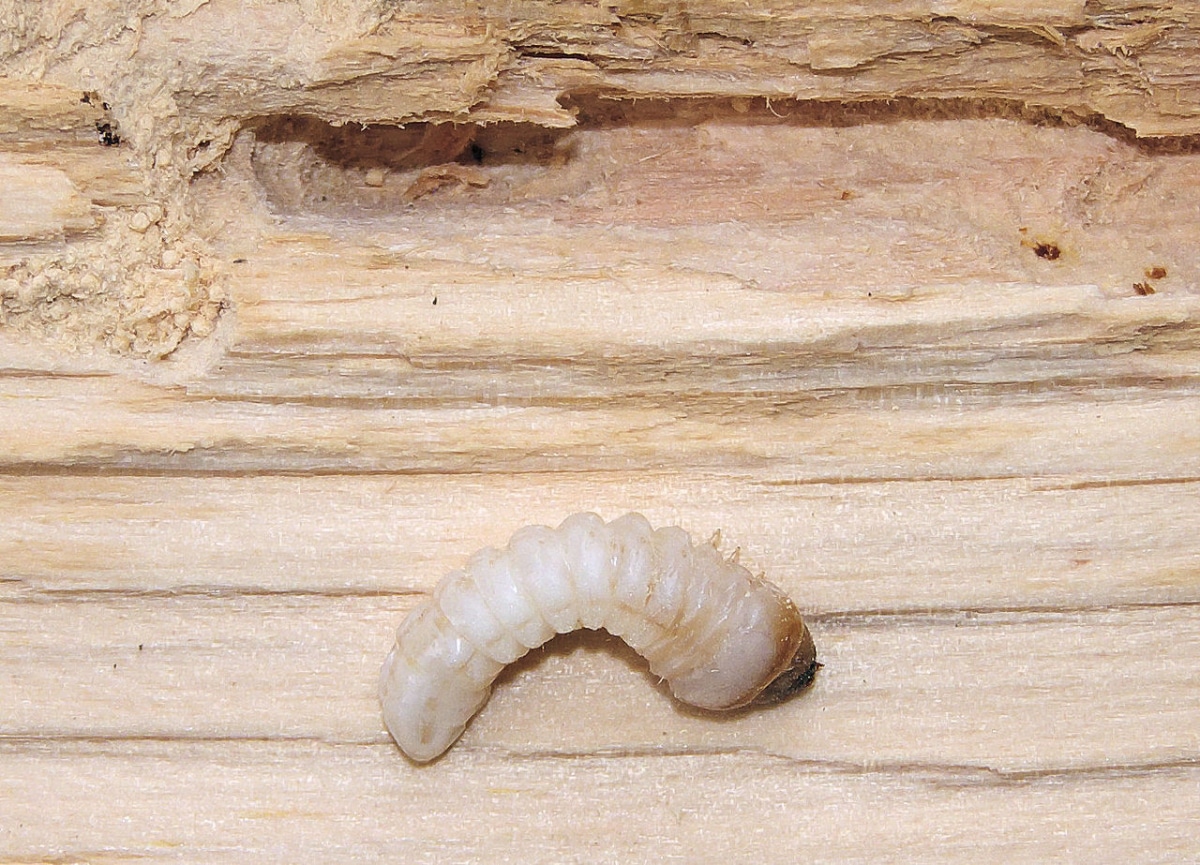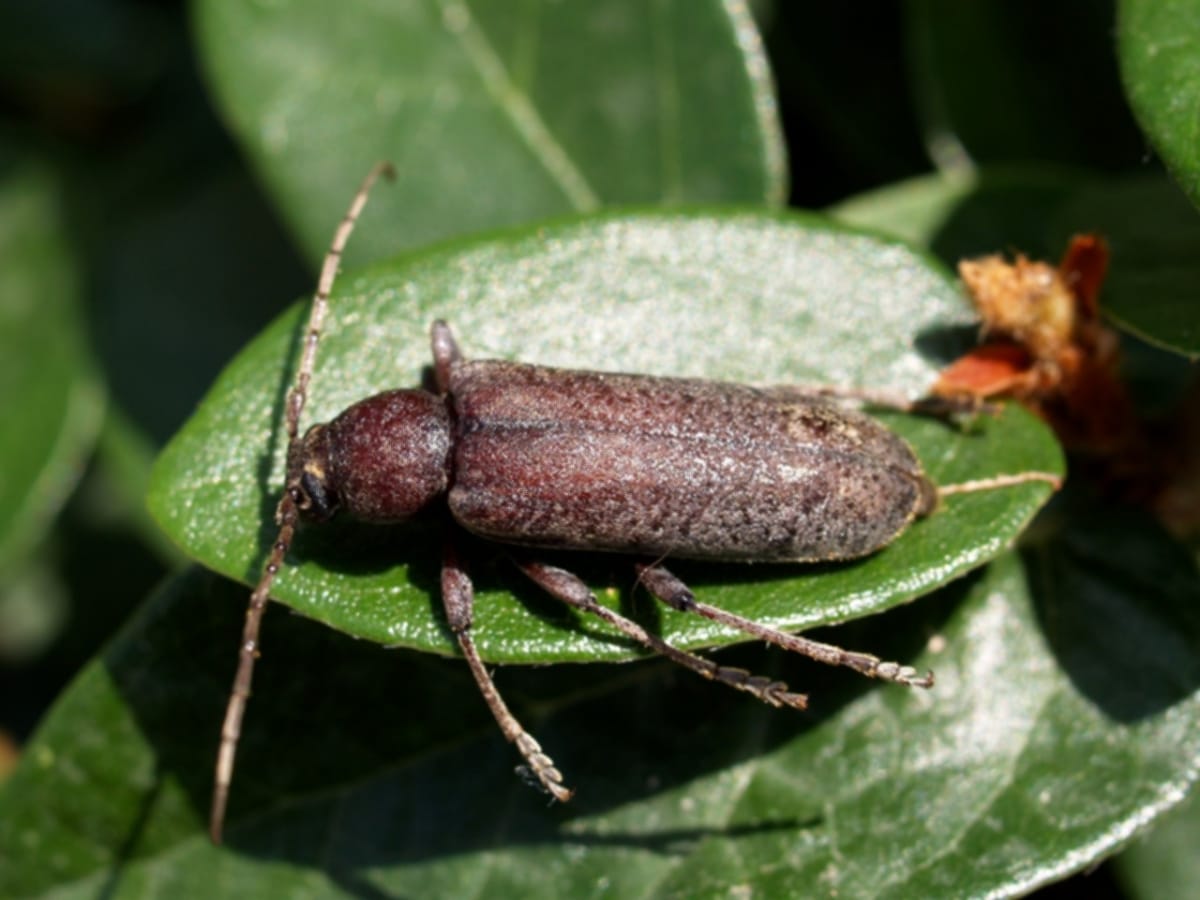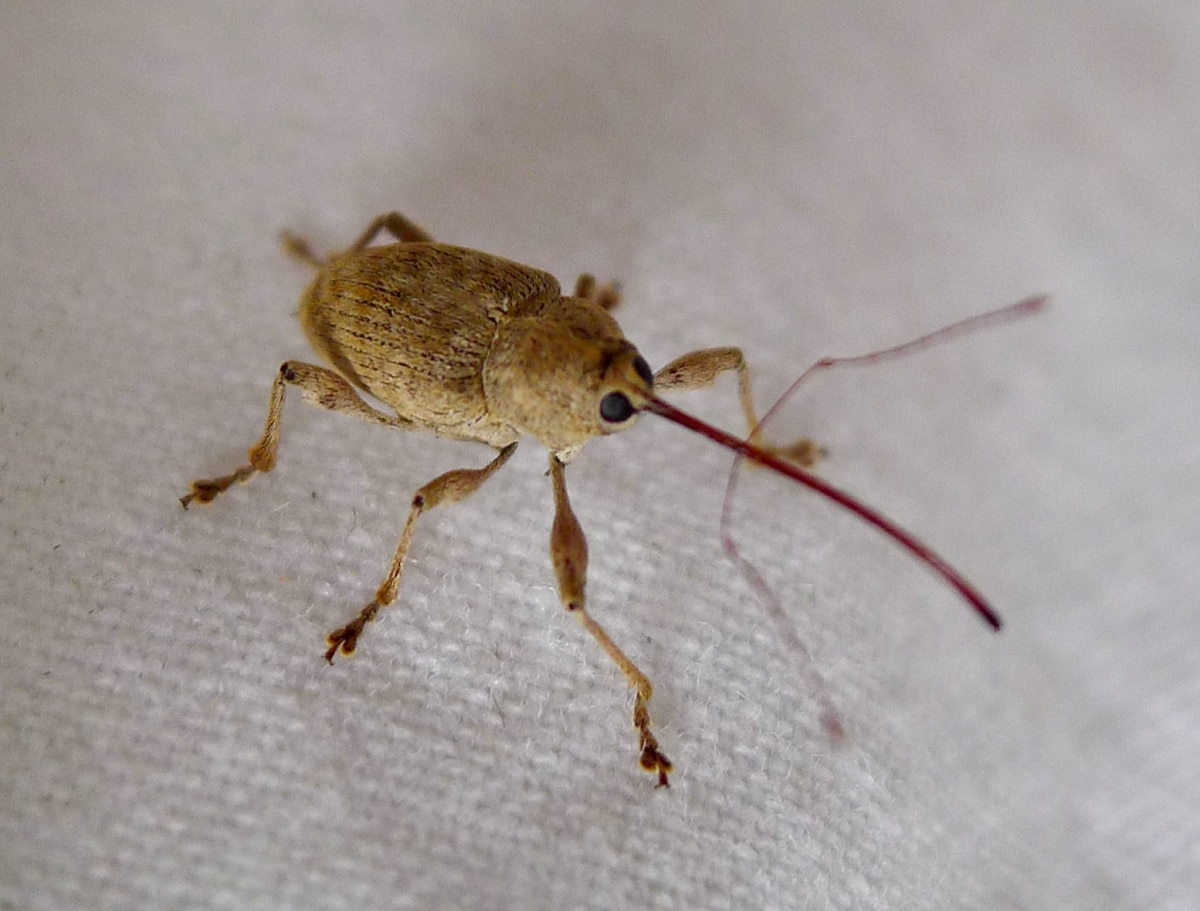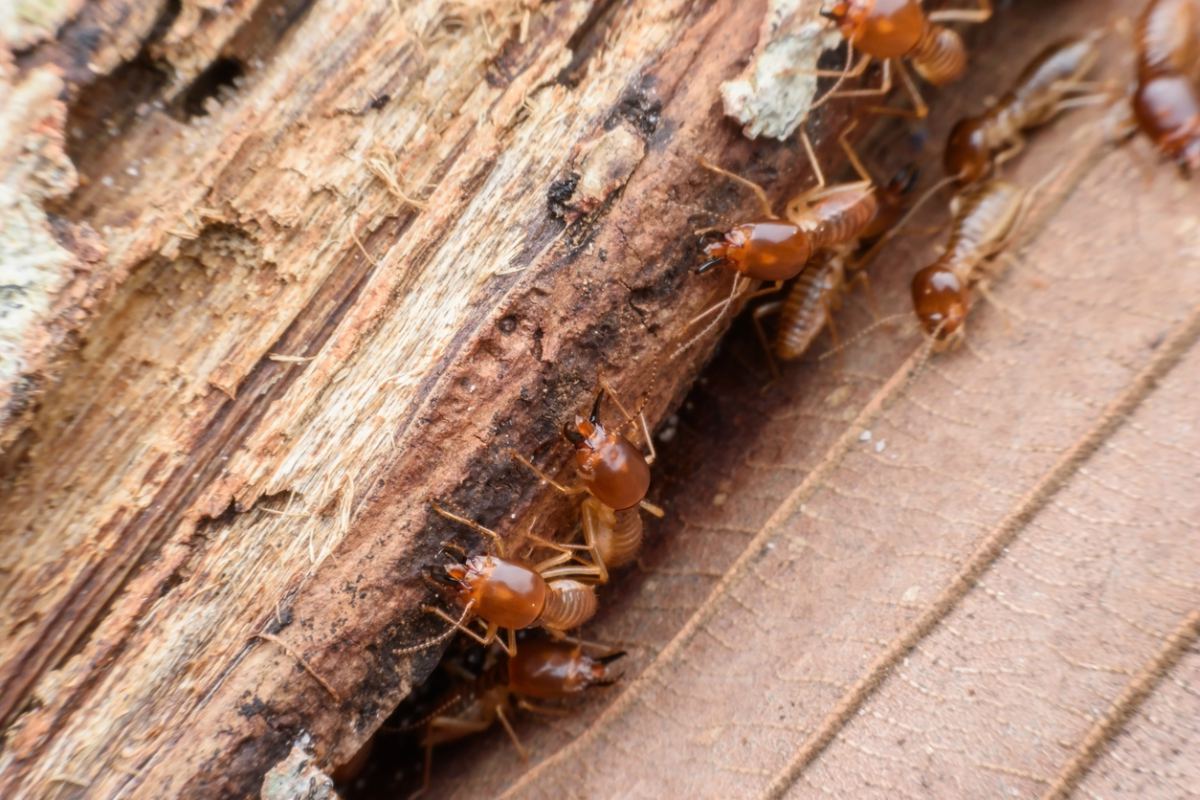
Image - Wikimedia / Rasbak
Woodworm is a pest that can destroy wooden furniture in a very short time, as it digs galleries in it. This is a problem, because it makes the material lose firmness, and it has a higher risk of cracking and/or even rotting if it is outside. Because, It is important to first inspect the products you want to buy well, and then try to keep them in good condition., preventing them from getting wet and applying specific wood oil if they are on the patio, balcony or garden.
But did you know that there are different types of woodworm? I know, we can all seem the same; not in vain, they all cause more or less the same damage. However, there are different families that should be known.
What types of woodworms are most common in Spain?
La woodworm It is the plague that all of us who have wooden furniture or floors want to avoid. And it is that, nobody likes to have, for example, a table full of holes or a chair that has lost firmness as a result of the voracious appetite of the larvae of these insects.
In Spain there are four large families that receive the popular name of woodworm. They are the following:
Bostrichidae (Lyctids)

Image - Flickr / Bill & Mark Bell
the lyctids They are beetles that measure between 3 and 8 millimeters in length, and have an elongated reddish-brown body., sometimes black. They have two long and functional wings, with which they can go from one place to another without problems.
They also have two antennae and six legs. Like the rest of the woodworm species, the female lays her eggs in the wood.
Where will we find them?
They feed, basically, on wood that has a humidity higher than 6%. This means that there are many plants that serve as shelter and sustenance, such as:
- trees of a certain age: once they produce hard wood, the lyctids take advantage of them by leaving their eggs in the sapwood, that is, in the part between the bark and the heartwood.
- Bamboo: the interior of the adult canes is an ideal place for this pest.
Cerambycidae, or Cerambicids

Image - Flickr / Ferran Turmo Gort
Cerambicids, known as large woodworms, are large beetles since they measure between 1,2 millimeters and 17 centimeters (such is the case of the titanus giganteus, who lives in the Amazon). They are characterized by having very long antennae, often longer than the body itself., which is grayish-brown in color and has two long fronts.
Taking into account its size and the voracity of the larvae, The damage they cause is very serious.. Therefore, any measure that serves to avoid this plague will undoubtedly be of great help to keep the wood in good condition.
Where will we find them?
- In ancient wooden figures
- Mature trees, with woody trunks
- dry wood furniture
Curculionidae (Curcilionidae)

Image - Flickr / gailhampshire
Curculionids are weevils that they have the mouth at the end of the face, and an elongated body of dark colors. It is protected by a hard shell, and also has two wings with which they can fly.
It must be said that not all of them are harmful, but yes there are some that can cause significant damage, such as those of the genus Curculio that feed on acorns and nuts.
Where will we find them?
Their larvae have a preference for wood with humidity equal to or greater than 20%, therefore, they can be found in:
- The sapwood of trees, especially broadleaf and coniferous
- Wooden furniture
- Books
Isoptera (Termites)

Termites are insects that, like ants, have a complex social lifestyle: each one fulfills a function within the colony. But they can also be a problem for those of us who have wooden furniture; not in vain, they excavate galleries inside it and live there.
For this reason, although it is not a beetle like the common woodworm, we could not fail to include it on this list.
Where will we find them?
It is possible to see them in:
- Wooden furniture
- Wooden floors
- Anything that contains cellulose, such as paper or cardboard
- Beams, panels, etc. of wood
Ptinidae (Anobids)

Image – Flickr/gbohne
The anobids, insects that have now been classified within the Ptinidae, they are polyphagous beetles, that is, beetles that eat different types of food, found all over the world. It is known that there are 1800 genera, and many more species or varieties.
All of them they are characterized by being relatively small: they measure between 1,5 and 9 millimeters in length. Its body is subcylindrical in shape and pubescent. The head has two antennae and large eyes. In addition, they have wings with which they can fly without difficulty.
Where will we find them?
The larvae feed on:
- Dead and soft wood
- Books
- food products such as bread
- Cigars
- Leather
How is woodworm removed?

There is a home remedy that works very well and it is placing fresh acorns next to or on the affected areas. This is a fruit that emits an aroma that attracts woodworms, so don't hesitate to place a few in a tied cloth bag so that the adult female leaves the eggs inside the bag, and not on your furniture. When next spring comes, throw them away.
Another practical way to eliminate it and even prevent the plague is applying used oil to them with a brush. This won't kill the larvae immediately, but it will when they feed on the oil.
Finally, you can also get rid of the different types of woodworm on the figures and other small pieces of wood by putting them in the freezer inside plastic bags and leaving them there for a few days. The larvae do not tolerate cold, so they will not last long.
We hope it has been useful to you.